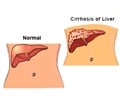A thesis from the University of Gothenburg, Sweden, reveals that women who are satisfied with everyday life and are involved in leisure activities rarely have problems with alcohol.

In one study, 851 women aged 20-55 answered questions about their everyday life covering employment, leisure activities, the distribution of housework, how much time they have to themselves to do things they enjoy, and how satisfied they are in each of these areas.
"Alcohol dependence and abuse, high alcohol consumption and high episodic drinking turned out to be most common among women who, despite having more time to themselves, are less involved in leisure activities," says Andersson.
"Being more involved and being satisfied with the various domains of everyday life, such as work, housework and leisure activities, has only a weak link to risk drinking, even for those with little time to themselves."
The results of another of the underlying studies showed that alcohol dependence is more common among women who drink to cope better with everyday life (for example to get to sleep or feel less down), those who drink frequently and those who drink alone. Intensive alcohol consumption is most common among those who acknowledge the social effects of drinking.
The results also point to the importance of identifying groups of individuals with different drinking patterns. Drawing attention to the needs that alcohol consumption meets in women's everyday life may be a further preventative measure.
Advertisement
Source-ANI















